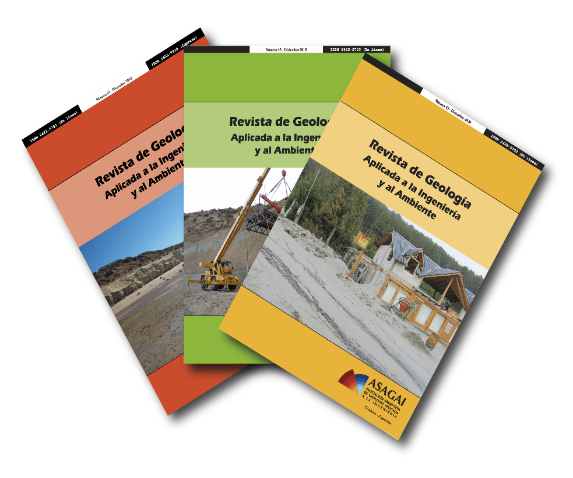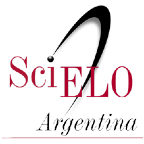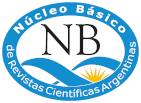About the Journal
Focus and scope
Periodicity
Open access policy
Functioning
Objectivity standar
Acknowledgment of sources
Archive/Digital preservation
Editorial team
Topics
Editorial Policies
Indexation
Journal Statute
Author Guidelines
Peer evaluation process
Section policies
Copyright Notice
Privacy Statement
---------------------------------------------------------
FOCUS AND SCOPE
The purpose of the Journal of Geology Applied to Engineering and the Environment is to promote the publication and dissemination of quality original articles, as well as the dissemination of news about events and publications of interest on the subject.
It is aimed at scientists and professionals in geology, engineering, environmental sciences and related disciplines, as well as undergraduate and postgraduate students in these specialties.
Topics included in the Journal are: rock and soil mechanics; foundations; environmental geology; geological-engineering aspects in the construction of works and pathologies of the land; geological aspects related to energy resources and remote sensing, geochemistry and applied geophysics; thematic cartography; geological risk; urban geology and land use planning; coastal geology; medical geology; integrated water resources management; geoparks and geotourism; application rocks and other materials for engineering use.
It is the official publication of the Argentine Association of Applied Geology to Engineering (ASAGAI). Since 2023, it has updated its format to continuous publication.
The journal was published online (between 2008 and 2022) every six months and was published in print format from 1998 to 2018 inclusive. Currently, its periodicity corresponds to continuous publication with an open annual volume. It publishes original articles, book reviews, technical notes and discussions, special articles and guests dossier and opinion articles in Spanish, English and Portuguese languages. The reception of articles is permanently open.
In all cases, the opinions expressed in this publication are the responsibility of the authors and do not reflect official positions of the Argentine Association of Applied Geology to Engineering. All articles are subjected to a peer review process by renowned specialists who collaborate, for this purpose, voluntarily and without any profit, with the Journal.
PERIODICITY
Continuous publication with an open annual volume. One issue is closed per year.
OPEN ACCESS POLICY
This journal provides open access to all its content (Open Access) and is licensed under a Creative Commons open license (Attribution-NonCommercial-ShareAlike 4.0 International). This allows any user to read, download, copy, distribute, print, search or link to the full texts of the articles in order to use them for lawful purposes, under the conditions of acknowledgment, of non-commercial use and, if so, of disseminating the content under the same license as the original. In turn, open access implies that there is no embargo period for content publication and that readers can access the journal's content without registering for free.
FUNCTIONING
All papers sent to the Journal of Geology Applied to Engineering and the Environment for evaluation and possible publication must be original and unpublished, not previously published or presented in any other medium.
All authors who submit papers for publication in the Journal of Geology Applied to Engineering and the Environment as original articles declare that the submitted papers represent contributions of their authors not copied or plagiarized, in whole or in part, from other authors. The authors will acknowledge that each and every one of the real or potential conflicts of interest of their work or of the benefits that result from it have been revealed.
The Journal of Geology Applied to Engineering and the Environment is committed to submitting the manuscripts received to a clean and blind procedure, of peer review, to accept their publication, as well as to avoid any real or potential conflict of interest between the publisher, the reviewers and the reviewed material. Any deviation from the rules defined above should be communicated directly to the Editor, who will unequivocally undertake to provide the solution keys for any of the problems that may arise in this regard.
The articles are initially reviewed by the Editor-in-Chief and/or Associate Editor(s), who check that they meet the formal requirements, relevance and this editorial policy. If its publication is considered pertinent, the peer review is carried out by sending the original manuscript to two evaluators 100% external to the publishing entity and in blind mode. In the case of disparity of opinions, it is referred to a third external evaluator. The revisions will be produced with objectivity. Personal criticism of the author is inappropriate. Reviewers must express their point of view, with substantiated arguments.
The final decision regarding the publication of the articles and reviews is made based on the opinions of the external evaluators, for which two favorable recommendations for publication are required. The Editors reserve the possibility of making the final decision in the event that the third evaluation does not establish whether or not the article should be accepted for publication. The Editor will rely on the peer review system for editorial decisions and through editorial communications with the author may also help improve the article.
The possible rulings are: accepted, accepted with minor changes, accepted with major changes, and not accepted. The evaluation process takes between two and four months.
OBJECTIVITY STANDARS
Reviews will be conducted objectively. Personal criticism of the author is inappropriate. Referees should express their views clearly, with supporting arguments.
ACKNOWLEDGMENT OF SOURCES
Reviewers should identify relevant published work that has not been cited by the authors. Any statement that an observation, derivation, or argument had been previously reported should be accompanied by the relevant citation. A reviewer should also call to the editor's attention any substantial similarity or overlap between the manuscript under consideration and any other published paper of which they have personal knowledge.
The authors are recommended to take in account those papers previously published by JEGE in their manuscript´s topics as antecedents of the proposed research, with its citation both in text and in references.
ARCHIVE/DIGITAL PRESERVATION
Understanding digital preservation as a set of practices, policies, strategies and actions aimed at guaranteeing the durability and accessibility of digital content in the long term, the Journal of Engineering Geology and the Environment uses two storage methods: its own and external. The own supports used for the "backup copy" are 2 (two) external disks, in which all the information regarding the magazine is stored on a monthly basis. The external supports are preservation by LOCKKS in your PKP Preservation Network module according to the current version of OJS 3.









